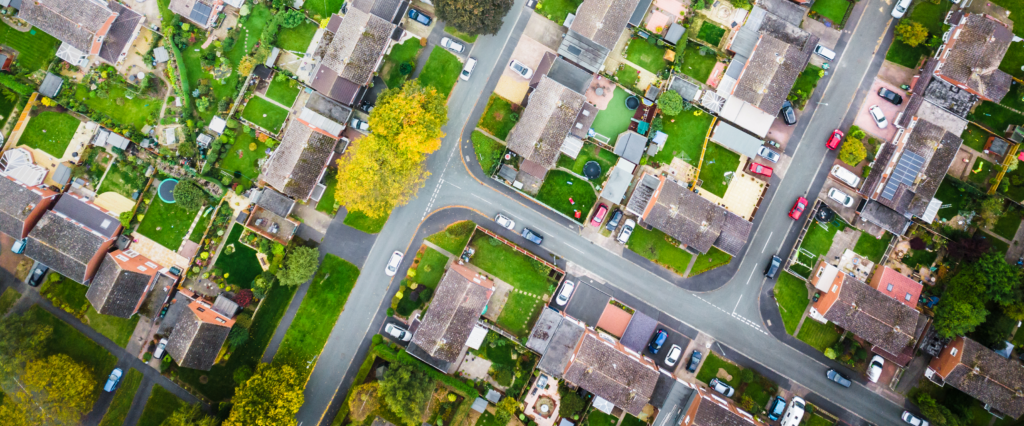Why public sector buildings are decarbonising with Voltalis
Public sector buildings are essential to the UK’s infrastructure. Yet, these buildings face a growing challenge: reducing energy costs and carbon emissions across a diverse range of old and new buildings.
As of 2023, there are over 141,600 public sector buildings across the UK, including government offices, hospitals, and schools, presenting a huge opportunity for carbon reduction at scale.
With the UK’s ambitious targets to cut emissions by 50% by 2032 and 75% by 2037, public sector buildings need efficient and affordable solutions to meet these goals without expensive infrastructure changes.
A smart, cost-effective solution
Voltalis’ Demand Response technology is a small, easy-to-install, free-of-charge device that connects to any electric radiator, turning it into a “smart radiator” that can be managed remotely via a smartphone, desktop computer or tablet.
With the Voltalis device, public sector buildings can reduce their energy consumption by up to 15% and carbon emissions by up to 70% (during peak winter loads) without a complete infrastructure overhaul.
What is Demand Response technology?
Demand Response technology optimises energy use by automatically reducing electricity consumption during peak periods–usually for just minutes at a time–without any impact on thermal comfort. This technology helps power systems rely less on emissions-heavy power plants while providing a smart way for businesses and households to save energy.
While these short interruptions might seem small, Demand Response technology makes a significant difference when rolled out at scale. Voltalis currently has over 250,000 connected households, each on average saving 3.5 kW (kilowatt), helping to deliver savings of up to 700,000 kW of flexible power—the equivalent output of one gas power plant.

Benefits of Voltalis technology
- Easy installation
Voltalis integrates seamlessly with existing electric radiators, avoiding the need for costly replacements or infrastructure changes.
- Immediate impact
Voltalis reduces energy use, carbon emissions and costs as soon as the system is activated.
- Measurable results
Voltalis provides comprehensive data to track progress towards decarbonisation targets.
Case study: UWTSD Lampeter Campus
The University of Wales Trinity Saint David (UWTSD) installed Voltalis in student accommodation on their historic Lampeter campus, the home of the oldest degree awarding institution in Wales. This move supports their commitment to sustainability and meeting the Welsh Government’s ambitious carbon reduction goals.
Daniel Priddy, Head of Sustainability at UWTSD, explains:
“We’ve installed Voltalis in over 100 rooms, and we’re set to see the benefits over the new term: with energy bills going down, progress in our decarbonisation goals and the integration working seamlessly with our other sustainability efforts and wider energy mix reduction. We love mixing new tech like Voltalis with more traditional energy efficiency initiatives like solar panel installation or even using wool from local sheep for insulation in our roofs.
“The University has buildings that are 200 years old, as well as modern buildings. The challenge is always how to decarbonise both effectively – especially with the Welsh Government’s ambitious and pioneering carbon reduction targets. Voltalis has been brilliant and we’re proud to be an early installer within the United Kingdom. The benefit of this technology is that it clips onto our existing electric radiators – there’s no need to replace existing systems, just wire in and go.
“What we like about Voltalis is that it effectively makes old traditional radiators smart without replacing the radiator system. People think installing smart tech is long, complicated and expensive. But this isn’t the case with Voltalis. If you can do it on a campus like this, you can do it anywhere.”
Read more about how Voltalis helps public entities here.
Why Voltalis
- Scalable solution
We’ve connected over 1.5 million devices across 250,000 homes and businesses and are the first company to have unlocked this potential at scale.
- Backed by UK government
The UK’s Department for Business, Energy and Industrial Strategy has funded the development of 500 Voltalis sites nationwide. More than 85% of users are satisfied with their experience.
- Cost-effective
Our systems are completely free, as Voltalis is funded by the grid operator for its participation in energy management.
From historic university campuses to modern hospitals, Voltalis is a proven and cost-effective solution for public sector building managers, businesses, homeowners, and housing developers who are ready to decarbonise and see immediate installation benefits.
Ready to make your building greener? Contact us today to learn how Voltalis can help you reduce your energy consumption and support the UK’s decarbonisation goals.

